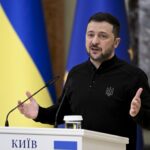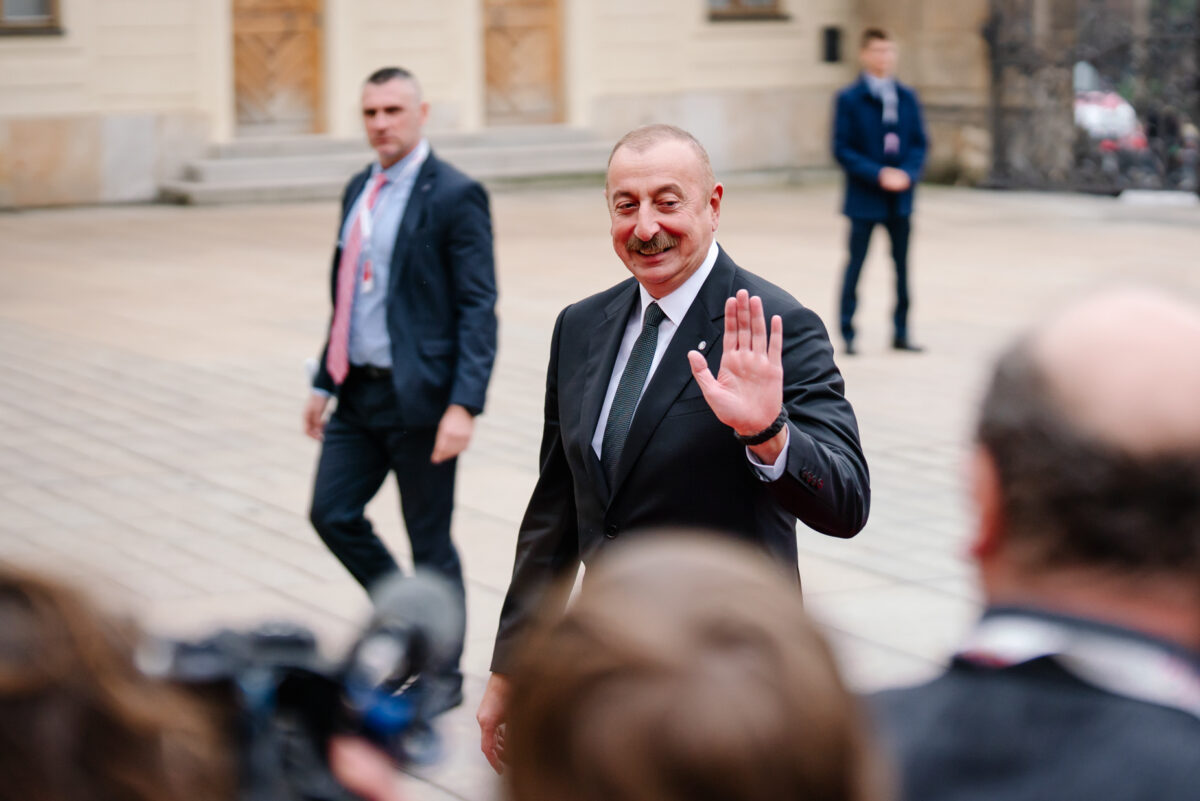In late November, Hayat Tahrir al-Sham (HTS)—an outgrowth of the now-defunct Al-Nusra Front and Syria’s main opposition movement—launched a lightning offensive from Aleppo to Damascus that culminated in the eventual deposition and forced exile of the country’s deeply unpopular head-of-state Bashar al-Assad two weeks later.
It is still unclear why his blindsided benefactors, Russia and Iran, decided against mounting a counterinsurgency and simply abandoned ‘Project Syria’, which is estimated to have cost them anywhere between 30-50 billion US dollars each.
Either way, the House of Assad’s abrupt downfall after 53 years of iron-fisted, murderous rule begs the question as to what lies in store for Azerbaijan’s ruling Aliyev clan—another dynastic regime over which Russo-Iranian influence looms large.
True to form, both Moscow and Tehran hinted at the involvement of their all-purpose bogeyman—the Collective West—in HTS’ takeover of Syria.
That said, the outsized role of Turkish President Recep Tayyip Erdoğan in orchestrating the coup is not lost on the Russians and Iranians. Contrary to 2015, though, when Putin responded the downing of a Sukhoi Su-24 warplane by Türkiye with draconian action such as prohibiting tourists from travelling there and banning certain imports, he no longer has the bandwidth to adopt a similar sledgehammer approach vis-à-vis one of Russia’s most important sanctions circumvention hubs.
Besides being permissive of illicit financial flows and featuring on the FATF grey list until mid-2024, Türkiye hosts a sizeable Russian diaspora while its flagship carrier Turkish Airlines operates regular flights to major Russian cities. The same line of reasoning can be applied to Iran, whose nationals are subject to equally lax entry requirements and use Türkiye as an end-run around the US-led ‘maximum pressure campaign’.
Turkish appendage
With the deck stacked against them and BRICS members set to face punitive measures for bypassing the dollar once Donald Trump assumes office, Putin and the mullahs are likely to come up with a measured retaliation which puts Erdoğan in his place without necessarily dealing him a knockout blow and upending the status quo.
One such ‘middle ground’ option is closing ranks to topple Ilham Aliyev. It is no secret that Azerbaijan has, in recent years, become an appendage of Türkiye under the ‘one nation, two states’ framework.
Besides Turkish military support and in particular, its Bayraktar TB2 UAVs proving pivotal in Azerbaijan’s victory over Armenia during the 44-day Second Nagorno-Karabakh War, the Caspian nation has joined blocs featuring Türkiye such as the Organisation of Turkic States and the D-8 but shown no interest in acceding to Russian-led alliances like the Collective Security Treaty Organisation (CSTO) and Eurasian Economic Union (EAEU) which Moscow will almost certainly hold against Baku in due course.
So far, the CSTO has functioned as nothing more than a glorified ‘OMON’ outfit whose sole raison d’être is to quash popular uprisings across the post-Soviet space—namely Belarus in 2020 and Kazakhstan in 2022.
However, unlike Kazakh President Kassym-Jomrat Tokayev who at least sought to create an illusion of cleaning house and introducing social reforms following the ‘Bloody January’ unrest, Aliyev has chosen to go down the path of Belarusian strongman Alexander Lukashenko in crushing civil society and press freedom.
Overseas-based Azeri academics critical of their government like LSE Professor Gubad Ibadoghlu and PhD candidate Bahruz Samadov have been arbitrarily locked up upon returning home and handed lengthy prison sentences for ‘high treason’.
Local authorities are also intensifying their crackdown on independent, anti-establishment media outlets—the latest high-profile case being the arrest of five journalists from Meydan TV which even drew condemnation from US Secretary of State Antony Blinken.
Democracy? No thanks
Aliyev, for his part, has remained wilfully blind to the democratic headwinds sweeping across ‘Greater Eurasia’ and made the job of his ill-wishers that much easier by not giving an inch.
His obstinance may well come home to roost and leave him stewing in his own juice, not least by virtue of the bridges he has burned in recent years. Azerbaijan’s most notable falling out has been with France, ostensibly over the latter throwing its weight behind Armenia during the armed conflict in Karabakh as well as accusing Azerbaijan of ethnically cleansing some 120,000 Armenians after seizing the previously disputed enclave.
Baku, in turn, is alleged to have meddled in the internal affairs of far-flung French protectorates New Caledonia and Mayotte by fanning the flames of pro-separatist riots. Aliyev has also suggested that the EU’s monitoring mission along the Armenia-Azerbaijan border is a front for NATO and demanded its withdrawal as a precondition for signing a peace treaty.
Interestingly, he also took aim at and essentially hounded out Russia’s peacekeeping contingent there before their five-year term was set to lapse in 2025.
Let the chips fall
Although the Russians favour predictably and continuity in their ‘backyard’, they are not monetarily or emotionally invested in Azerbaijan nor do they regard its current incumbent as indispensable.
On the cusp of signing a historic ‘comprehensive treaty” with Iran which includes mutual security guarantees as well as the continued provision of drones, munitions and spare parts for its ongoing ‘special military operation’, the Kremlin will gladly look the other way and let the chips fall where they may should an Iranian-sponsored revolution unfold in Azerbaijan.
As far as China is concerned, an extremist vigilante filling the ensuing power vacuum would, by no means, be an unwelcome development so long as they are able to sweet-talk those in charge into ‘win-win’ cooperation and not pulling out of the Belt and Road Initiative (BRI).
Meanwhile, Armenia has forged strategic partnerships with key regional players like India and Iran—not to mention its influential lobbies in Western Capitals that consistently advocate for holding Aliyev’s feet to the fire over the grave human rights breaches he continues to commit with total impunity.
Yerevan and Tehran remain united in their vehement opposition to the Zangezur Corridor—a transport artery that would grant Azerbaijan proper unfettered access to its exclave Nakhchivan and also connect Baku to Türkiye’s Kars Province by passing through Armenia, albeit at the expense of “redrawing borders”, according to Iran.
That said, the controversial logistical route is far from the only flashpoint in its relationship with Azerbaijan. Increasingly cosy ties between the Aliyev administration and Israel remain another major bone of contention. Armenia’s move to recognise Palestine in the aftermath of the October 7, 2023 Massacre was largely down to the state-of-the-art weaponry and spyware Tel Aviv furnished Baku with in the buildup to the 2020 conflagration.
The Islamic Republic, by contrast, is livid at Azerbaijan for supplying Israel with 40 per cent of its total crude oil imports via the Baku-Tbilisi-Ceyhan (BTC) pipeline and, by extension, helping underwrite the Israeli Defence Forces’ (IDF) ongoing aggression throughout the Levant.
Foul play?
Needless to say, Iran’s ruling elite considers Azerbaijan a ‘brotherly’ state—inasmuch as they deem it sovereign at all. From their standpoint, having a ‘Zionist nest of spies’ stationed in a fellow Shia-majority jurisdiction is an even more bitter pill to swallow than the Abraham Accords.
It is worth remembering that on January 27, 2023, a lone gunman opened fire at Azerbaijan’s Embassy in Tehran and killed its security chief a few months after Baku announced plans to establish a diplomatic mission in Tel Aviv.
Former President Ebrahim Raisi’s helicopter crash on the way back from a meeting with his Azeri counterpart last May at a mountainous border region did little to assuage concerns among senior Iranian officials of Aliyev being Israel’s point man in the South Caucasus, notwithstanding the harsh weather conditions to which the ‘butcher of Tehran’s’ sudden death was attributed.
What aroused further suspicion of possible foul play was that Iran’s then Foreign Minister Hossein Amir-Abdollahian, who spoke fluent Arabic and played an integral role in revitalising his country’s ties with the Persian Gulf states, also perished in the accident.
The theocratic clerics style themselves as ‘chess players’ and subscribe to the adage that “revenge is a dish best served cold”.
Nonetheless, it is just a matter of time before their ‘strategic patience’ wears thin given the calamitous year they went through. Not only have their regional proxies turned to dust and the Islamic Revolutionary Guard Corps (IRGC) been reduced to a spent force, but Iran has suffered humiliating setbacks on its territory such as the January 3rd terrorist attack at a commemoration ceremony for the slain Quds Force General Qasem Soleimani in Kerman and the Mossad-led assassination of Hamas leader Ismail Haniyeh in Tehran during newly-elected Iranian President Masoud Pezeshkian’s inauguration.
The fact that Haniyeh was taken out at a guesthouse belonging to Ayatollah Ali Khamenei served as a warning shot to the supreme leader himself. A successful regime change operation in Azerbaijan is Iran’s best bet to outfox and claim much-needed bragging rights over an emboldened Israel. The Islamic Republic has a knack for exporting its ideology by preying on the vulnerabilities of downtrodden masses in neighbouring countries.
Same fate as the Assads?
The industrial scale of corruption that has occurred under Aliyev’s watch and allowed him to allegedly amass a vast ‘empire of hidden wealth’—including luxury off-shore properties in coveted destinations like London and Dubai—could consign Azerbaijan’s first family to the same fate as the al-Assads once the word is out.
Already on a collision course with the European Union and the United States over their finger-wagging and partisanship while not exactly on the best of terms with either Russia or Iran, Aliyev is fast running out of allies who would be willing to step in when his stranglehold on the lawless petrostate is threatened.
Photo: Ilham Aliyev arriving at a meeting of the European Political Community in 2022. © European Union.







